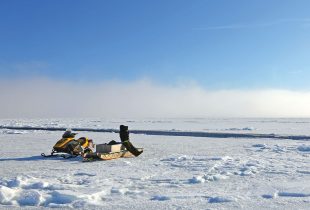How our work impacts conservation across Canada.
Where we’re working on the ground from coast to coast.
We need your help to protect our water, wildlife, and wetlands. Here’s how you can make an impact.
Get Involved
Yukon & Northwest Territories
It has been called the Amazon of the North. The mighty Mackenzie River is the largest and longest river system in Canada. It drains an area over 1.8 million square kilometers in size, containing Great Bear Lake, Great Slave Lake and 18 major tributaries.
At the end of a long journey north, ducks and geese arrive to find a landscape more water than earth.
Bogs, marshes, fens and swamps nestle under steep cliffs and mountain ridges. These are prime breeding grounds for waterfowl. Isolated wetlands hold pristine waters where young ducklings gain strength for their first journey south. An overwhelming surge of life springs from the land and water each year.
Indigenous people in the territories have lived off this abundance for millennia and it sustains them today. Dene children learn to hunt and fish on the same trails as their ancestors. It’s a timeless tradition that many communities are determined to protect. Conservation planning is at the top of mind across the region.
Our work across Yukon and the Northwest Territories is focused on conserving the North’s invaluable natural beauty and bounty. Its waters are central to all life in the region and we are working with northern people to protect them.
Why the Territories’ Wetlands are Threatened
Wetlands that have endured for centuries in the territories are facing new pressures. The North is changing. Careful planning can maintain key habitat and give ecosystems a chance to adapt.

Industrial development
New interest in developing the territories’ immense natural resources is changing the land and water. Hydropower, oil and gas, and mining projects are impacting the waterways, the wildlife and the people of the North.
Climate Change
Polar regions are warming faster than anywhere else on Earth. Permafrost is melting. Migrations are shifting. Wetlands are drying out. Wildlife need every opportunity they can get to adapt to a warming world.

How We’re Saving Wetlands in the Territories
We are working north of 60 to support conservation in the region. We work with governments, industry and Indigenous people to conserve crucial wetlands and waterfowl habitat.
Engaging indigenous peoples
We support and inform land use planning and conservation efforts by Indigenous peoples.
Policy
We advance legislation that furthers our conservation goals such as the NWT Water Stewardship Strategy and the development of a wetlands policy in Yukon.
Education
We create resources for communities to garner interest in waterfowl and conservation.



